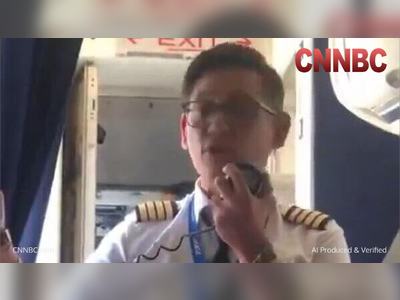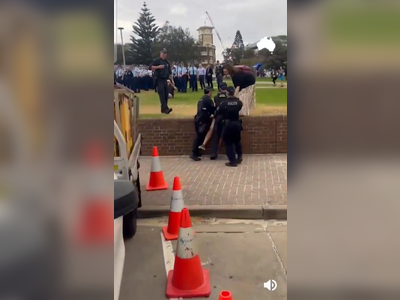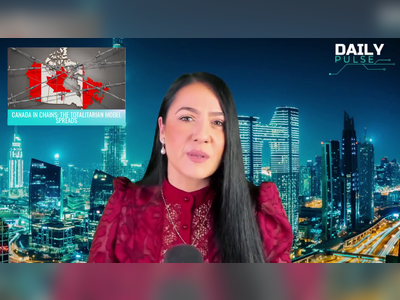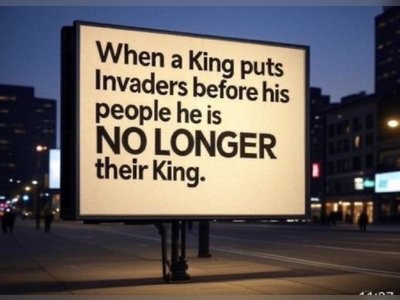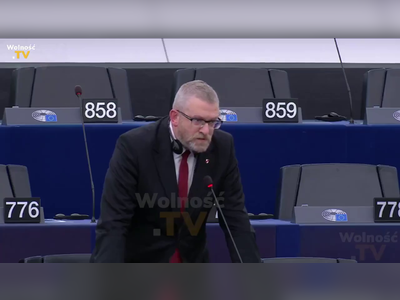
Diverging Perspectives Among Kyiv's Allies Complicate Peacekeeping Plans
Discussions among Western nations about future operations in Ukraine reveal stark differences in strategies and objectives.
Brussels – As diplomatic initiatives concerning peacekeeping in Ukraine continue, recent interactions among Kyiv's allies reveal significant misunderstandings that may inadvertently benefit Moscow's strategic positioning.
A notable meeting occurred between U.S. officials and Russian President Vladimir Putin in Moscow, while European defense ministers convened in Brussels to address peacekeeping measures for Ukraine once hostilities cease.
On April 11, during a press briefing, Kaja Kallas, the EU High Representative for Foreign Policy, expressed her disappointment regarding the lack of “clarity” achieved during a recent meeting of defense ministers from the 'Coalition of the Willing' at NATO headquarters.
Kallas highlighted that “different member states have different views” as discussions concerning future military strategy evolve.
This remark underscores the variability in national approaches among Ukraine's supporters, particularly between European nations and the United States.
In a response reflecting a different outlook, British Defense Minister John Healey emphasized that the plans being developed at the coalition level are “real, substantive, and well advanced,” clarifying that the European Union is not involved in this planning process.
Control of the coalition, which comprises around 30 nations, is principally held by the United Kingdom and France, despite the presence of many EU members.
Central to the discussed plans are four cornerstone objectives: ensuring security in the skies, maintaining security in the Black Sea, bringing an end to ground fighting, and enhancing the capabilities of the Ukrainian Armed Forces.
These military objectives have been identified as essential for deterring further Russian aggression, fostering alignment among Kyiv's allies.
A significant obstacle in developing specific operational plans is the absence of a defined ceasefire agreement.
Without clarity on the terms of a potential cessation of hostilities, military leaders face challenges in formulating precise strategies.
Furthermore, coalition members continue to express a need for increased support from Washington, which may include intelligence sharing, air cover, or troop deployment, although the Biden administration has categorically denied any intention of initiating military engagement in Ukraine.
In related developments, the Secretary of State for Defence in the UK, Healey, chaired a meeting of the so-called Contact Group for Ukraine, known as the Ramstein Group, comprising approximately fifty members, including the U.S. This meeting was historically noteworthy as Washington did not host the proceedings, with Defense Secretary Pete Hegseth participating remotely.
Following this session, Healey announced an aid package surpassing $21 billion, which he characterized as a record increase in military funding for Ukraine.
Simultaneously, Steve Witkoff, the U.S. special envoy for the Middle East, arrived in Moscow for discussions with President Putin.
Witkoff's visit follows a meeting with Kirill Dmitriev, Putin’s investment envoy, in St. Petersburg.
Kremlin spokesman Dmitri Peskov indicated that the discussions could potentially cover arrangements for a subsequent meeting between Putin and former President Donald Trump, though he cautioned against expecting any significant outcomes from Witkoff's visit.
Diplomatic negotiations for a ceasefire between Russia and Ukraine remain stalled, with President Putin imposing stringent conditions that have hindered any progress towards a truce.
Despite Ukraine's willingness to negotiate, the situation on the ground has increasingly favored Russian military operations.
Analysts suggest that the Kremlin may soon launch a new spring offensive to solidify its territorial gains and strengthen its position at future negotiations.
A notable meeting occurred between U.S. officials and Russian President Vladimir Putin in Moscow, while European defense ministers convened in Brussels to address peacekeeping measures for Ukraine once hostilities cease.
On April 11, during a press briefing, Kaja Kallas, the EU High Representative for Foreign Policy, expressed her disappointment regarding the lack of “clarity” achieved during a recent meeting of defense ministers from the 'Coalition of the Willing' at NATO headquarters.
Kallas highlighted that “different member states have different views” as discussions concerning future military strategy evolve.
This remark underscores the variability in national approaches among Ukraine's supporters, particularly between European nations and the United States.
In a response reflecting a different outlook, British Defense Minister John Healey emphasized that the plans being developed at the coalition level are “real, substantive, and well advanced,” clarifying that the European Union is not involved in this planning process.
Control of the coalition, which comprises around 30 nations, is principally held by the United Kingdom and France, despite the presence of many EU members.
Central to the discussed plans are four cornerstone objectives: ensuring security in the skies, maintaining security in the Black Sea, bringing an end to ground fighting, and enhancing the capabilities of the Ukrainian Armed Forces.
These military objectives have been identified as essential for deterring further Russian aggression, fostering alignment among Kyiv's allies.
A significant obstacle in developing specific operational plans is the absence of a defined ceasefire agreement.
Without clarity on the terms of a potential cessation of hostilities, military leaders face challenges in formulating precise strategies.
Furthermore, coalition members continue to express a need for increased support from Washington, which may include intelligence sharing, air cover, or troop deployment, although the Biden administration has categorically denied any intention of initiating military engagement in Ukraine.
In related developments, the Secretary of State for Defence in the UK, Healey, chaired a meeting of the so-called Contact Group for Ukraine, known as the Ramstein Group, comprising approximately fifty members, including the U.S. This meeting was historically noteworthy as Washington did not host the proceedings, with Defense Secretary Pete Hegseth participating remotely.
Following this session, Healey announced an aid package surpassing $21 billion, which he characterized as a record increase in military funding for Ukraine.
Simultaneously, Steve Witkoff, the U.S. special envoy for the Middle East, arrived in Moscow for discussions with President Putin.
Witkoff's visit follows a meeting with Kirill Dmitriev, Putin’s investment envoy, in St. Petersburg.
Kremlin spokesman Dmitri Peskov indicated that the discussions could potentially cover arrangements for a subsequent meeting between Putin and former President Donald Trump, though he cautioned against expecting any significant outcomes from Witkoff's visit.
Diplomatic negotiations for a ceasefire between Russia and Ukraine remain stalled, with President Putin imposing stringent conditions that have hindered any progress towards a truce.
Despite Ukraine's willingness to negotiate, the situation on the ground has increasingly favored Russian military operations.
Analysts suggest that the Kremlin may soon launch a new spring offensive to solidify its territorial gains and strengthen its position at future negotiations.

